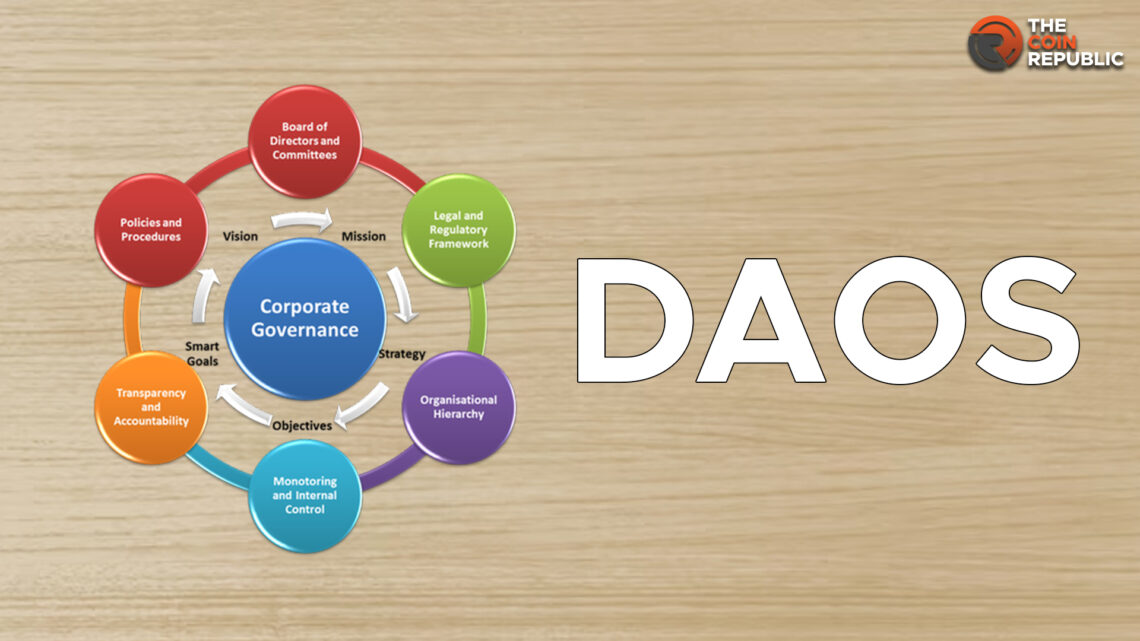- 1 DAO governance models allow businesses to establish and manage options in a decentralized manner.
- 2 These protocols offer alternative methods that are more democratic and dynamic in nature.
It all began back in 2009 when Satoshi Nakamoto introduced Bitcoin to the world. While the concept of peer-to-peer wasn’t new, the digital asset redefined it. Using blockchain or distributed decentralized ledger, cryptocurrency changed the rules for good. The new technology added a new dimension to data integrity and security.
But like every other technology, blockchain is also ever-evolving. So, in 2013, a Decentralized Autonomous Organization (DAO) was introduced. It worked on the same principle. However, it notched up things to a great extent. In essence, a DAO governance model is handled by users instead of select individuals or an admin.
As the technology advanced, different variants of DAOs also surfaced. To understand the concept and its variations, one must delve deeper into it.
DAO: In A Nutshell
The very name suggests that DAO is about running an organization in a decentralized and autonomous. Organizations have followed a centralized structure so far because it supports the companies. It keeps power in the hands of a few, who make decisions for all the people.
While blockchain showed an alternative to it, DAO took it further. The latter is a way via which an enterprise could keep its operation decentralized and secure at the same time. In simple words, it favors the highest form of an egalitarian system that treats everyone equally. A DAO structure can follow different models of governance, which must be understood for its seamless integration.
Decoding DAO Mechanism
Like the rest of the blockchain-based solutions, DAOs utilize smart contracts for their operations. These contracts are open to public audits and verification. They allow any member of the network to read and review the information inside. Also, it gives them the right to impact the decision-making of the protocol.
The members of the DAO mechanism get this power by owning its tokens. Every token holder will have the right to say on governance matters. The whole thing works in a step-by-step process. First of all, the project issues its tokens following a systematic funding round.
People who buy these tokens become members of the DAO. Notably, to make any changes in the smart contract, voting has to be done. The proposed change will only take place when the majority says yes to it through a consensus. At this point, readers must know that there are different types of DAO governance models that businesses could adopt.
Types of Governance Models
Using these DAO governance models, companies can democratize and optimize their operations.
Constitution DAO
Under this model, a group of individuals come up and decide how they want to run the DAO. First, they pool their resources, buy tokens, and share ownership on predetermined terms. It’s called Constitution DAO because the group that started this model bought a copy of the US Constitution.
The project came into being after lots of discussions over Discord that took weeks. All the hard work came to fruition when the artifact was sold for $43.2 million. The group actually accumulated $ 47 million in Ether, but the bid was limited to $43 million. On the completion of the fundraiser, DAO offered full refunds to all the donors in the auction. People either took the refunds or chose to keep the governance tokens.
Ethereum Name Service DAO
The project took off with an airdrop and a request for delegates. They decided to create an ENS token with the registration of every Ethereum domain. Due to the large number of tokens received by users, this campaign gained lots of attention on social media. The project utilizes a three-layer approach to maintain the ENS governance.
It should be noted most proposals are inducted and discussed on Discord. After a thorough discussion, they are finalized and released on Discord. The Constitution was the proposal proposed and discussed at length in this platform. Through this proposal, preliminary parameters of this DAO were set up.
Still, users should know that the approach to governance is rather complicated here. The proposals need to acquire 1% assent to get executed. It implies that only a few people can deduce the fate of the proposals.
JuiceboxDAO
JuiceboxDAO lets businesses reach investors without necessitating an audit of the platform. The users can deploy Ethereum’s public smart contract and create a full-fledged funding structure.
Friends With Benefits DAO
FWB has been introduced by a group of artists and innovators rooting for Web3 technology. Moreover, it has a limited supply of 1 million, which makes it quite exclusive. The users can find simple governance along with a multi-group-based model.
The knowledge of DAOs allows budding startups and individuals to set up their businesses successfully. In the future, they are likely to get more fruitful and far-reaching in nature. So probably, a lot of other businesses will seek the DAO governance models.

With a background in journalism, Ritika Sharma has worked with many reputed media firms focusing on general news such as politics and crime. She joined The Coin Republic as a reporter for crypto, and found a great passion for cryptocurrency, Web3, NFTs and other digital assets. She spends a lot of time researching and delving deeper into these concepts around the clock, and is a strong advocate for women in STEM.


 Home
Home News
News






